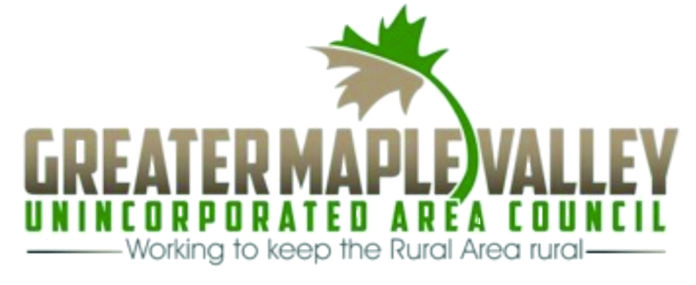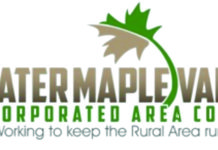On Monday, December 4, the Area Council held its monthly meeting at the Maple Valley Fire Station and via Zoom. Major topics discussed were: (1) Cedar Hills Regional Landfill; (2) King County Water Services and Private Wells; and (3) King County Code Enforcement Audit.
Cedar Hills Regional Landfill (CHRLF)
Ms. Janet Dobrowski, Member of the Area Council’s Environment Committee and a neighbor of the CHRLF presented details on CHRLF Arsenic and Methane Emissions concerns.
CHRLF currently is flaring landfill gas 24/7, rather than sending it to BioEnergy Washington (BEW) for processing due to a contract dispute over Arsenic. While levels of Arsenic in the CHRLF leachate have violated regulatory limits since 2017, there also is a concern about Arsenic & inorganic Arsenic compounds (both classified as Group 1 carcinogens) in landfill gas that could present health issues if the airborne Arsenic compounds exceed EPA guidelines. Further, there are no regulations requiring landfills to test the air for Arsenic. Leachate is sent to the Renton Wastewater Treatment plant where it is tested for Arsenic, but can’t be removed, and then discharged into the environment as “treated water” or spread in Eastern WA or Western Cascades as “LOOP” (i.e., sewage sludge).
CHRLF permit from the Puget Sound Clean Air Agency (PSCAA) requires monthly Methane surface monitoring, with quarterly reports. However, the permit also allows CHRLF to exclude parts of the landfill if the area is unsafe—steep slopes, active landfill area, etc.—resulting in a large portion unmonitored. PSCAA, after performing a preliminary evaluation finding existing Arsenic emissions may exceed Acceptable Source Impact Level (ASIL) emissions, issued a November 3 Administrative Order to CHRLF to conduct an analysis of air emissions of Arsenic and those resultant concentrations in ambient air. CHRLF has 60 days to report on its findings.
Unfortunately, CHRLF Methane monitoring showed no limits exceeded, while those from its own contractor and a BEW drone study showed readings exceeding permit limits (500 ppm). The Area Council will continue to seek to ensure CHRLF meets its regulatory obligations.
King County Water Services and Private Wells
Mr. Daniel Cardwell of the King County (KC) Department of Local Services—Permitting Division (KC DLS-P) and Chair of the KC Utilities Technical Review Committee discussed permit-exempt wells and private wells. Mr. Cardwell described Group A water systems (15+ connections), Group B water systems (2-14 connections); and private wells. He indicated the GMVUAC territory (Tahoma School District minus the City of Maple Valley) is partially covered by the Cedar River Water & Sewer District and the Covington Water District, with the remainder receiving water from wells.
Mr. Cardwell described the major court Hirst decision. On January 18, 2018, the State Legislature approved legislation to address the water availability issues resulting from the Washington Supreme Court’s 2016 decision in Whatcom County v. Hirst. The adopted statute—WA Streamflow Restoration Act—resolved the water availability issue for new domestic water withdrawals from exempt wells by transferring the responsibility for determining water availability and mitigating impacts from future water withdrawals to the State Department of Ecology (DOE). This legislation applied to all building and subdivision applications in unincorporated King County that rely on new connections to permit-exempt wells installed after January 18, 2018 located in water resource inventory areas (WRIA) 7, 8, 9, 10 and 15 (we are in the WRIA 8 Cedar – Sammamish).
By June 30, 2021, DOE was required to prepare and adopt a watershed restoration and enhancement plan for each of these WRIA’s. DOE had an additional two years to adopt rules implementing these plans. Until these restoration plans have been developed and rules adopted (the WRIA 8 has not been adopted), to comply with the other provisions of this statute, KC DLS-P requires the following for each building permit or subdivision application that is dependent upon new connections to permit-exempt wells installed after January 18, 2018: (1) Payment of $500 for each building permit application; (2) Copy of the DOE Water Well Report; and (3) Permit conditions and recorded legal documents that:
•Limit withdrawals to domestic use only to a maximum annual average of 950 gallons per day (gpd) per connection, up to a maximum of 5,000 gpd per well.
•Limit water withdrawals to 350 gpd for interior use only under declared drought conditions;
•Require management of stormwater on-site, maximizing infiltration and low impact development techniques, to the extent practicable;
•For properties located within an approved water service area, require connection to public water when service becomes available.
Conditions restricting water use may not be removed until authorized through rules adopted by DOE implementing the watershed restoration and enhancement plans for the WRIA in which a property is located. Public Health Seattle-King County reviews new well installation for construction, water quality, and pump tests.
King County Code Enforcement Audit
The KC Auditor’s Office (KCAO) was tasked by the KC Council to conduct an audit of code enforcement in the Department of Local Services-Permitting Division (DLS-P). According to KC Councilwoman Perry: “This is important because the Code Enforcement (CE)section engages with residents on sensitive environmental and community issues, working in a high-volume, high-risk atmosphere. Several previous analyses made a variety of recommendations for process improvements, but it is unclear if managers have implemented those recommendations and to what extent they produced positive results for residents, the environment, and the code enforcement program.”
The Scope was to review the work of the DLS-P and its Code Enforcement (CE) Section in implementing the county’s code compliance program under Title 23 of KC Code, focusing on cases opened between 2015 and 2023. The Objectives were to determine to what extent: (1) Has CE implemented strategies recommended in previous studies and provisos, and what are the barriers to implementation and results of the progress they made?; (2) Is complete and reliable data available to drive efficient, effective, and equitable code enforcement operations?; and (3) Does CE clearly communicate with and educate residents about its processes and penalties?
On November 14 the KCAO released its Audit Report (gmvuac.org/wp/wp-content/uploads/2023/12/Audit-Code-Enforcement-2023.pdf) and made subsequent presentations to two KC Council Committees: Government Accountability & Operations (on 11/14) and Local Services & Land-Use (on 11/28). Several Joint Rural Area Team organizations, including the Area Council, provided Oral Testimonies at the latter committee meeting. These testimonies generally presented the following key points regarding DLS-P: (1) Made it into a profit center, i.e., incentivized to issue permits; (2) Doesn’t enforce all conditions on permits; (3) Doesn’t always enforce against primary land-use violations; (4) Doesn’t use tools it has available from KC Code Title 23; and (5) Doesn’t recoup some of its costs.
The Area Council believes DLS-P needs: a new Mission Statement with clear definition of Customers, i.e., the people of KC; a new Organizational Structure—one not siloed into and based on Product Lines; a Budget that does not limit enforcement of both Code and imposed permit Conditions; and a Mandate to not issue Conditional Permits for Industrial / Mining activities it cannot enforce due to limited budget or priorities, as the safety and health of the people and their shared environment must be a paramount focus.
Next Area Council Meeting
The next Area Council monthly meeting will be held Monday, January 8, 2024, from 7 – 9:30 PM at the Maple Valley Fire Station at 22225 SE 231st St (across from the KC Sheriff’s Precinct). Meetings are held on the first Monday of the month (except for Holidays, when they are held on the second Monday). As a hybrid meeting, members of the public will be able to attend either in-person or virtually via Zoom.
Meeting announcements, Agendas, and Zoom information are published in the Voice of the Valley, the Area Council’s Website (www.gmvuac.org) and local NextDoor platforms. You can also find us on our FaceBook page (https://www.facebook.com/GMVUAC/). Each meeting begins with an open Public Comment period where anyone can voice concerns, comments, etc. to the Area Council.
Area Council Membership
Your Area Council serves as an all-volunteer, locally recognized advisory body to King County on behalf of all rural unincorporated area residents living in the Tahoma School District. The Area Council’s works to keep the Rural Area rural. The Area Council also works regionally with other King County Rural Area organizations through both Joint Planning and its Joint Transportation Initiative.
The twelve-seat Area Council has four open seats. If you have an interest in joining, please send an e-mail to: info@gmvuac.org or attend (either in-person or virtually) a monthly meeting and express your interest. To be eligible to join the Area Council as a member you need to live within the Tahoma School District.
Residents, even those who do not live within the Tahoma School District, are eligible to become Associate Members who can serve on any Area Council Committee: Environment, Growth Management, Transportation, Public Relations, or Train Show. Each committee votes for its own Chair and Vice-Chairs and Associate Members are eligible for those positions. The Area Council welcomes your participation. For information on each of these committees please see the Area Council’s Website (www.gmvuac.org) and use the drop-down menu under Committees.
All Monthly Meeting Summary Articles, such as this, can be found on our website’s Home page in the 2023/2022 GMVUAC Monthly Meeting Articles box or by using the drop-down menu under Correspondence.




